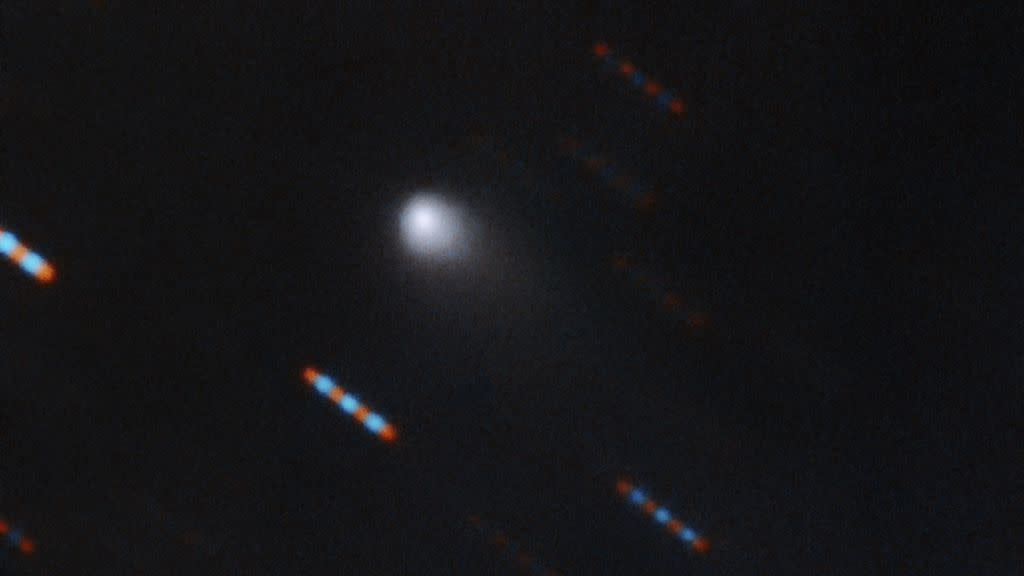Scientists spot gas on 'alien' comet from another galaxy in world first

A visitor to our solar system became the subject of headlines around the world in 2017 after the cigar-shaped rock now named `Oumuamua flew past our sun.
Now a second visitor has arrived - named Borisov after the amateur astronomer who spotted it.
It’s believed not to come from our solar system, but from another, unknown one, and scientists have detected gas molecules on it.
The find will make it easier to understand such future visitors, and even how our solar system compares with others in our galaxy.
‘For the first time we are able to accurately measure what an interstellar visitor is made of, and compare it with our own solar system,’ said Professor Alan Fitzsimmons of the Astrophysics Research Centre, Queen's University Belfast.
Read More
Star was hurled across our galaxy by new kind of black hole
Feeling ‘hangry’ is a real thing, scientists discover
Asteroid that wiped out dinosaurs ‘exploded with force of 10bn atomic bombs’
Comet Borisov was discovered by Crimean amateur astronomer Gennadiy Borisov in August.
Observations over the following 12 days showed that it was not orbiting the Sun, but was just passing through the solar system on its own path through our galaxy.
14/14 So just keep that in mind when you hear news about the comet 2I/Borisov. It’s visiting our region of space briefly, but will tell us a lot about a complete different part of our galaxy. And there will be more like it to see, maybe even soon.https://t.co/ZHOXLJkXNd
/fin— Phil Plait (@BadAstronomer) September 30, 2019
By 24 September it had been renamed 2I/Borisov, the second interstellar object ever discovered in our solar system by astronomers.
Researchers used the William Hersch Telescope (WHT) to detect the faint light of the comet - and the gas contained within.
The gas detected was cyanogen, made of a carbon atom and a nitrogen atom bonded together. It is a toxic gas if inhaled, but it is relatively common in comets.
The team concluded that the most remarkable thing about the comet is that it appears ordinary in terms of the gas and dust it is emitting.
It looks like it was born 4.6 billion years ago with the other comets in our solar system, yet has come from an - as yet - unidentified star system.
Unlike the first such object discovered two years ago, 1I/'Oumuamua, this object appeared as a faint comet, with a surrounding atmosphere of dust particles, and a short tail.
Alan Fitzsimmons, of Queen’s University Belfast, said, ‘Our first attempt was on Friday 13 September, but we were unlucky and were thwarted by the brightness of the sky so close to the Sun. But the next attempt was successful.
‘A spectrum allows us to detect individual types of gas by their spectral fingerprints. We received the data at midday and by 5pm that evening we knew we had successfully detected gas for the first time.’

 Yahoo News
Yahoo News 
